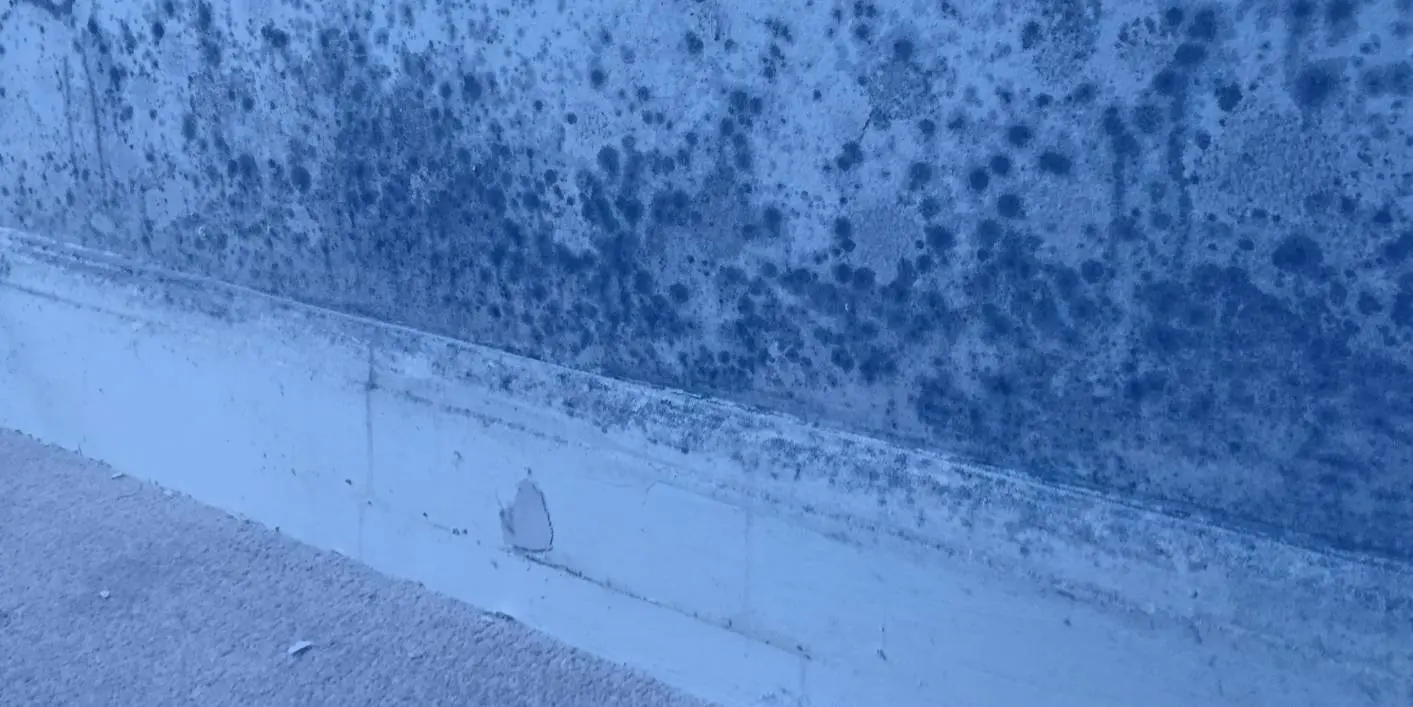None of us want mold in our homes. Many of us are unaware what causes it. Become informed with this article and learn how to prevent it, who is responsible and much more.
What is mould?
Mould is small micro organisms, and there are presumably over 1 million types of mould, where 100,000 of them have been named. Some moulds can be disease-promoting while others are harmless. Mould occurs and thrives in moist environments.
Where can mould grow?
As mentioned above, mould thrives in humid places. In tenancies, this will usually be in:
- Painted walls
- Wallpaper
- Dust and other dirt
- Fabric and leather
- Organic insulation material
- Wood
- Paper and cardboard
Pro tip
If you sense that there is mould in your tenancy, it is very important that you act on it and do something about it. You can be held liable if you choose to ignore it.
Mould can also grow on concrete and glass if they are very moist or dirty. This has been seen in newly built properties, where the foundation has not dried properly before the new tenant moved in which resulted in mould developing. It is therefore important that you are aware if the newly built property and rooms feels humid.
Mould can also occur in connection with water damages, where the room/tenancy typically will be moist as a consequence of the water damage. You should therefore also be aware if you have just had a water damage. If you are lucky, you can stop the mould in time before it spreads too much.
Mould does, however, not thrive in all temperatures. If the tenancy is under 5 degrees, the will not grow. Moulds grow at temperatures between 5 and 27 degrees, hence the temperature in the property determines the growth.
You may also like: Move-in inspection and move-in report
Moulds can make you sick
Some moulds releases substances that can be hazardous to health, however, not to everyone. Typically, the disease is a consequence of someone being allergic to these substances that the mould releases. As there are many types of moulds, it is not certain that you react to all moulds.
Mould can induce:
- Headache
- Fatigue
- Concentration difficulty
- Memory loss
- Dizziness
- Itching eyes
- Blocked nose
- Sore throat.
- Burning skin
If you have any of the symptoms above, and you suspect that there are mould in your tenancy, it is likely that this is the case.
Why should you get help from DIGURA?
Every month, we help thousands of tenants both via our membership solution and our case processing. When we process the cases, we achieve a positive result for the tenants in 98% of the cases. We are here to help you who are potentially being deceived by your landlord, and you who actually want to keep the money you are entitled to.
- Free assessment of case
- Risk free and no hassle
- No Cure No Pay
Suspecting mould in your tenancy
If you suspect that there is mould in your tenancy, you should contact your landlord and make him/her aware of the problem. Mould is seen as a defect in the tenancy. It is important that your know that it can both be visible and hidden mould growth. If your landlord is responsible for the maintenance, the landlord must have the possibility to take care of it. This is also in order to minimize the loss as much as possible.
Clearly, the sooner the landlord can correct the defect the less expensive is will be. Moreover, you must follow the landlord’s instructions on how not to be held responsible for the growth of the mould. According to case law, you can be held liable for the loss that the landlord faces due to mould if you have not taken the necessary precautions to stop the growth.
When you have contacted your landlord, the landlord must as soon as possible examine whether there is mould or not as well as the extend and reason for the mould. This is done with an inspection of the tenancy. If it becomes necessary, there must be carried out further technical inspection of the mould growth.
You can also get an expert out yourself to carry out the inspection. This will, however, cost money. You can only legally claim this expense to be paid by the landlord of the landlord has the responsibility the mould.
The district council can be the tenants best friend when mould occurs
If your landlord does not respond within reasonable time, and the mould thereby cannot be stopped, you should contact the district council nearest to you. The district council will then carry out an inspection of the tenancy. If the district council finds the tenancy to be uninhabitable, they can prohibit any usage of the tenancy due to the danger. If the district council determines condemnation of the tenancy, they must set a deadline for moving out within which the residents must have been assigned another property.
If you are unsatisfied with the district council’s decision or processing time, the urban regeneration committee can process the case. The case will then be taken to the state administration where an inspection claim can be put forward.
You might also like: Get as much deposit back as possible
Pro tip
Get legal assistance. In situations where mould is an issue, it is very important that you get specialized people to help you as well as legal help, as there is a possibility of compensation and rehousing.
Who has the responsibility for mould in an apartment?
If mould is found in the tenancy, it is relevant to clarify who has the responsibility the mould occuring. It can quickly become expensive for the party who carried the responsibility. To clarify who has the responsibility for the mould in the tenancy, an investigation will be carried out. This is to determine if the tenant has taken the proper precautions, has undertaken in improper usage of the tenancy or if the mould is due to construction errors.
Improper usage of the tenancy can for example be:
- Lack of airing of the tenancy
- Lack of cleaning
- Not wiping down damp or misted windows
- Lack of heating
- Not following the landlord’s instructions
If you hang clothes to air dry inside your tenancy, it is very important air out the tenancy very well. If you are aware of the above mentioned, the chances of you being responsible for the mould, due to improper usage, becomes smaller
Construction errors can for example be:
- Thermal bridges
- The foundation not being dry
- Draughty windows and doors
Despite there being construction errors it not equivalent to the landlord being responsible. If you do not have heating on in your tenancy or air out regularly, and this incites the mould, the tenant can be held responsible according to case law – even though there are construction errors. It is possible to formulate it in such a way that the construction error must be of such a major factor that airing and heating in a regular scale have not been able to prevent the growth of mould. This does, however, not mean that you do not have to air and heat up the tenancy. It would worsen the situation and in worse case scenario it can worsen the situation to such a degree that the responsibility shift over to you.
You might also like: Defects and shortcomings in the tenancy: The big guide for tenants
Can you remove mould yourself?
In principle, you can remove mould yourself if it concerns a less invasive case of mould on washable surfaces. Examples of this can be painted walls , brickwork or tiles. It is possible to clean such surfaces with a disinfectant or mould biocides. If the mould has affected other material that cannot be washed, the affected objects must be gotten rid of. Examples of this can be wall paper and insulation material.
Consequences of mould
If you are held responsible for the mould, you are liable for making sure it is corrected and treated. If your landlord is responsible, it is of course your landlord who must correct this.
If the tenancy is unlivable as a consequence of the mould, you can terminate the lease without having to pay rent in the notice period. In such cases, it must be due to construction errors or the landlord’s lack of maintenance of the tenancy. Also, you must have made your landlord aware of the situation, for example via mail, and your landlord ignores the situation and fails to act on it. It is also a possibility to get your rent reduced retroactively from the first time the the mould was observed. Furthermore, in case law in is seen that you can get your refurbishment claim reduced if the mould is characterized as a major defect.
You might also like: How to terminate your lease
Get legal advice and avoid being deceived
This topic can be very complicated as a tenant. The above is to be seen as a general guidance and not as downright legal advice. We always recommend that you contact us to ensure that you get the proper necessary legal advice that is relevant for your specific case.
You can get help with this topic but also any other matters you may have. Unfortunately, we see many tenants that are being deceived. Often, they miss out on a lot of money – anything from a couple thousands to 30-40,000 kroner. Imagine what else you could spend the money on.
Let us help you
At DIGURA we are always available and easy to reach, you have your own legal advisor, and best of all you only pay if we win your case. Therefore, it is risk free for you to get help from us.
We have achieved a positive result for tenants in 98% of all the cases that we have processed. We have a 4,7 score on Trustpilot, 5 star rating on Facebook, and we have helped more than 1000 tenants. We really want to help you too.
If you are unsure about anything in the article, our team is ready to help in the chat. You can find the chat in the bottom right corner.
If you need legal advice, you can get your case assessed below. It is free and our competent legal team will make a non-committal assessment of your case.











